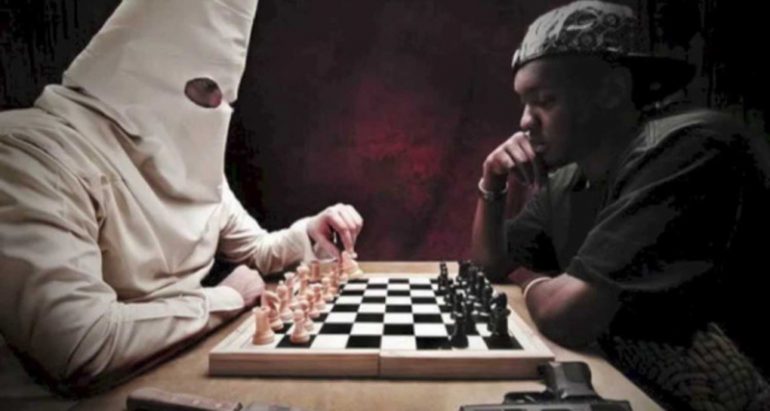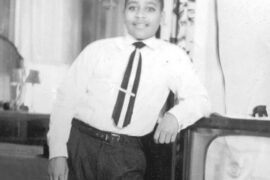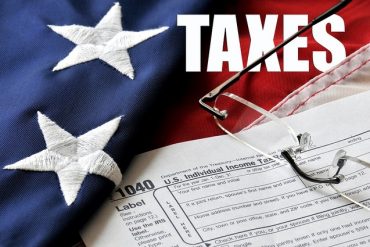By Paul King, Jr. – January 31, 2016
 In spite of the nagging pain, Black America can find some comfort in that the current run of unjustified police killings of African Americans is occurring at a time when deep thinking journalists and scholars are placing these travesties in their wider context.
In spite of the nagging pain, Black America can find some comfort in that the current run of unjustified police killings of African Americans is occurring at a time when deep thinking journalists and scholars are placing these travesties in their wider context.
Two that stand out are Ta-Nehisi Coates of The Atlantic magazine and Bryan Stevenson of the NYU School of Law.
As a Black Businessman deeply concerned with these matters, I have arranged to meet several times with Coates, both privately and publicly, and find his analysis complete and his conclusions beyond challenge. When I asked him to distill his indictment into its simplest form, he said: “Plundering Black people in such a way as to wound us and create permanent black injury.”
Black Injury????
Black injury. We hear a lot about White Privilege. But what exactly is Black Injury?
It’s right in front of you. Just look around. When public policy combines with racial animus, the victim goes on being harmed even though overt oppression and aggression may have ceased. Take, for instance, the red-lining of US government-backed home loans in decades past, not just here in Chicago but elsewhere across the U.S. When banks and other lenders refused to issue mortgages and home improvement loans in neighborhoods deemed un-creditworthy, thousands of black homebuyers in places like Chicago’s racially-changing West Side were forced to buy “on contract.” This greatly interrupted the accumulation of Black wealth and economic stability, for most buyers never really owned those homes, even after making down payments and expensive repairs.
 So for Coates, the continued economic depression and joblessness on Chicago’s West Side is no surprise. Even after the redlining technically stopped, the damage had become endemic. In the simplest analogy: If I beat you across the arms and legs with a 2-by-4, then stop and apologize, you are still injured after I say “sorry.”
So for Coates, the continued economic depression and joblessness on Chicago’s West Side is no surprise. Even after the redlining technically stopped, the damage had become endemic. In the simplest analogy: If I beat you across the arms and legs with a 2-by-4, then stop and apologize, you are still injured after I say “sorry.”
Yet Coates doesn’t take the bait when asked what Black people should now do. He sticks by his position of analyst, leaving action to others.
Bryan Stevenson, who I’ve also talked to, is both a brilliant writer and activist. In his book, Just Mercy, he advocates for Black Juveniles not being incarcerated with adults. His Equal Justice Initiative in Montgomery, Alabama, provides legal representation for many Blacks unable to obtain such services
Stevenson writes convincingly that America’s prisons have become warehouses for the mentally ill. Largely fueled by the “War on Drugs” and excessive sentencing, the mass incarceration of hundreds of thousands of Black poor and mentally ill has had a devastating effect on the communities from which they have been removed … and to which they will return.
Mental Illness in the Black Community
Stevenson and other mental health advocates argued for the transfer of the non- violent mentally ill to community support centers … yet such facilities are few and far between. In 1955 there was one psychiatric bed for every 300 Americans. By 2005 it was one bed for every 3,000.
It is this inability of low income Black people to receive treatment or necessary medicine that dramatically increases the likelihood of a police encounter that too often results in jail or prison time. By default the cell has become most states’ strategy for dealing with drug use and dependency. We’re seeing a flood of mentally ill Blacks consigned to prison for minor offenses and drug crimes …. or simply for “behavior” their community is unwilling to tolerate.

Today over 50 percent of Black jail and prison inmates have a diagnosed mental illness. Nearly one in five have what’s rated a “serious” mental condition. There are more than three times the seriously mentally ill behind bars than in hospitals. There they are often abused and preyed upon. Stevenson has also successfully litigated against Black children being sent to adult prison. He argues their often shocking and senseless crimes can’t be evaluated honestly without first understanding the lives these teens had been forced to endure.
In banning the death penalty for juveniles, the U.S. Supreme Court has more-or- less acknowledged the relevance of brain science in assessing juvenile crime and culpability, finding that many youngsters are impaired with immature judgment and an undeveloped capacity for self-regulation and responsibility. Our nation’s historic dismissal of this truth surely has led to more Black Injury.
Lately I’ve been speaking and writing on these matters, especially with reference to the impending release of large numbers of early-parolees and the impact they will have on the Black communities to which they will return.
 Again we are fortunate to have thinkers and researchers capable of providing both context and data points. One such is Matthew Epperson of the University of Chicago, a scholar who connects the dots. Twenty years ago, as a social worker at Cook County Jail, he noticed how frequently the police were called upon to deal with Black folks with mental illness. These encounters, especially involving the poor and homeless, too often ended in violence and death.
Again we are fortunate to have thinkers and researchers capable of providing both context and data points. One such is Matthew Epperson of the University of Chicago, a scholar who connects the dots. Twenty years ago, as a social worker at Cook County Jail, he noticed how frequently the police were called upon to deal with Black folks with mental illness. These encounters, especially involving the poor and homeless, too often ended in violence and death.
Consider the Christmas weekend killing of Quintonio LeGrier. He was wielding a baseball bat and loudly demanding entry to his father’s West Side apartment. Without investigating the causes or reasons for the call, he and an innocent Black neighbor were shot and killed by police newly arrived on the scene. LeGrier had a mental condition. Of course he did. According to the Washington Post, of 1,000 people (mostly Black) who were shot and killed by police in the U.S. in 2015, 25 percent had displayed signs of mental illness.
So instead of a medic in a white coat taking his blood pressure, one could argue, today’s mentally unstable Black man is as likely to encounter a guy in a blue uniform spilling his blood.
What to do? Epperson has a list:
- Train police to respond to mental health emergencies;
- Integrate mental health services with law enforcement;
- Create crisis teams to determine the best approach to police calls;
- Establish triage centers with respite beds to provide temporary shelter and expert referral.
Epperson says, “Health service cutbacks have turned cops into gun-carrying therapists.” But even if his ideas were put in place, Black people on the street or released from prison with mental illness will remain plundered and blundered. Oh, and Quintonio LeGrier still will be dead … another case of Black Injury.
The Drinking Water of Flint Michigan
But don’t think for a minute Blacks have to be out on the street, acting crazy, to be so mistreated. Now we have the innocent children of Flint, Michigan, to tell us otherwise.

In 2014 state and local bureaucrats decided that Flint should obtain its drinking water from the Flint River while a replacement pipeline was being laid to Lake Huron. The river water was known to be more polluted than lake water, but for over 18 months it was pumped through the city’s decaying lead pipes, despite complaints from the city’s majority Black population that it was coming out reddish brown and bad-tasting.
Turns out the river water was also causing dangerously high levels of lead to build up in the bloodstreams of Flint’s children. Lead is considered the No. 1 health threat to children and the effects of lead poison can last a lifetime. Not only does lead stunt a child’s growth, it damages the nervous system and leads to learning disabilities. It’s also linked to crime and anti-social behavior, ala Freddy Brown in Baltimore. Anybody spot the vicious circle here?
After much public outcry and media coverage, Michigan’s governor has vowed to do better by Flint. But even if the federal government provides bottled and/or purified water indefinitely, and even if non-corroding water pipes are installed, that won’t help the thousands of Black children already poisoned with lead. More Black Injury.
This concept of enduring damage and the need for adequate recompense is especially pertinent right now in our hometown of Chicago. The police here have shown a consistent inability to deal with Blacks with mental illness, even as hundreds more are about to be released from our state prisons and county jail. Relations between the Black community and the CPD are at a tipping point. And need I mention it’s an election year?
The Political Litmus Test
For my part, all candidates seeking votes and/or financial support from minority businesses need to pass a litmus test – What will they do to remediate Black Injury? I further challenge all ministers who are asked that their pulpits be used, all media hosts, all fraternities and sororities and all community activists and college groups to invoke this test with any and all candidates seeking their forums for campaign purposes . Ask them:
- Do you understand fully, as outlined above and elsewhere, the reality of Black Injury
- What steps would you take to prevent Black Injury? (Hint: placing body cameras on, much less issuing Tasers to, all police is not enough.)
- What is appropriate compensation for specific and proven cases of Black Injury? (Awarding the standard $5 million to families of those unjustly slain is insufficient. The University of Cincinnati, for instance, in compensation to the family of a Black man slain by campus police, recently awarded not just a multi-million dollar payment but also full four-year scholarships for the deceased’s 12 children.)

Yet Black Injury cannot be compensated by a check alone. It must be accompanied by a continual contractually committed period of not less than 5 years of emotional, environmental, educational, employment-enhancing, mental and medical assistance – all of which should be part of any settlement.
These are the conditions I insist of anyone seeking my support. I urge you to do the same. It’s not all that much to ask compared to the enormity of Black Injury.
Paul King is a Construction Consultant and member of Chicago’s Business Leadership Council.







Mr. King I appreciate and agree with your premise and your conclusions, including the Epperson List and the Political Litmus Test. The following is my single attempt at being constructively critical: Why did you not use two to three sentences to, minimally, introduce Mr. Ta-Nehisi Coates to your readers? To simply write, “So for Coates…”, assumes that all of your readers know of Coates and/or his writings. You afford Mr. Epperson much more of introduction, including employment and book title, etc. Just sayin’.
Thanks for writing. Your suggestion is well taken that not all know Mr. Coates. Hope you enjoyed reading the article.
Mr Oneal:
I appreciate your comment.As you may note this was a long article and I had to be mindful of how much could be said. I had to choose between how much I said about Coates background vs how many of his thoughts and ideas I advanced. I chose the latter. I did reference his association with the Atlantic Magazine( where his articles on Black Reparations and Black Mass Incarceration sold out the print editions ). Also the Publisher , Ndigo , featured the cover of Coates book , which has been on the NY Times Best seller list for months. I agree that I could have added one of these sentences. What was intentional , however , was to give more background on Stevenson because he was lesser known than Coates and to provide the most background information on Epperson , because he was the least known ( to me ) and I needed to put his ideas into context..
Paul King